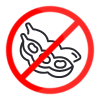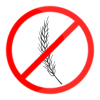









purebulkinc
Lion's Mane
Customers Who Bought This Item Also Bought
Supplement Facts & Directions
Supplement Facts
Serving Size: 500 milligramsServings Per Container: Varies
| Amount Per Serving | % Daily Value* |
|---|---|
| Lion's Mane Extract (Hericium erinaceus) (sporocarp) 500 mg (Standardized to ≥30% Polysaccharide) |
† |
* Percent Daily Values are based on a 2,000 calorie diet.
† Daily Value Not Established
‡
These supplement facts may vary from the product you receive. Please call for exact numbers.
Other Ingredients: <10% Maltodextrin
Free of: Added Sugar, Soy, Dairy, Yeast & Gluten.
Directions: As a dietary supplement, take 500 mg twice daily or as directed by a physician. An accurate gram weight scale is recommended.
Warning: If you are pregnant, nursing, taking any medications or have any medical condition consult your physician before use. Keep out of reach of children.
Product Details
What is Lion’s Mane Extract?
Lion’s mane (Hericium erinaceus) is an edible mushroom used in culinary dishes, teas, and supplement extracts. They contain notable levels of Hericium erinaceus polysaccharides (HEF-P) and B-glucan polysaccharides. The phenols and polysaccharides found in lion’s mane mushroom exert antioxidant, anti-inflammatory, and immunomodulatory effects. They also support cognitive health and function. PureBulk’s lion’s mane extract provides a concentrated percentage of polysaccharides to maximize the effects of lion’s mane.
Lion’s Mane Mushroom vs. Hedgehog Mushroom
Lion’s mane’s genus and species name Hericium erinaceus both translate into hedgehog in Latin. The German name for lion’s mane, Igel-Stachelbart, translates to hedgehog goatee. Some other English names for lion’s mane are bearded hedgehog, bearded tooth, and hedgehog mushroom. These names reflect the lion’s mane mushroom’s appearance. It resembles a whitish beard, and it grows in ½-2 inch toothlike spines on the trunks of trees or fallen logs.
However, hedgehog mushroom also refers to the mushroom species Hydnum repandum. Other names for this mushroom include sweet tooth and wood hedgehog. Hydnum repandum differs in several ways from lion’s mane. It has a cap and a stalk and can range in color, including yellow, orange or brown. Its spines grow from under the cap in crowded groups, which often gives it an irregular shape. Hydnum repandum can also naturally grow in ring or arc shape, commonly referred to as a fairy ring.
Potential Lion’s Mane Mushroom Benefits
Lion’s mane mushrooms contain the phytochemicals hericenones and erinacines. These compounds promote brain cell growth and may help preserve cognition. It may also enhance cognitive functioning by protecting neuronal cells from amyloid-beta plaque damage. Lion’s mane can stimulate nerve growth and repair while simultaneously reducing inflammation following an injury. These properties may reduce the severity of nerve damage and improve recovery time. Lion’s mane also helps regulate the growth and survival of neurons by enhancing nerve growth factor (NGF). It may exert some neuroprotective benefits by promoting the formation of myelin, the protective layer that sheaths nerves in the brain and spinal cord.
Lion’s mane mushroom extract may help regulate mood and relieve stress. It promotes cell growth in the hippocampus and enhances how it functions. The hippocampus is the part of the brain that controls emotional responses and boosting its performance may help regulate mood and stress levels. Lion’s mane’s anti-inflammatory properties may also support mood and stress responses, as chronic inflammation negatively affects mental and emotional wellbeing.
Lion’s mane mushroom also exerts antioxidant effects that may support heart, liver, and digestive health. Lion’s mane extract’s anti-inflammatory properties help it to reduce oxidative stress and rebalance antioxidant levels. Lion’s mane mushroom can also support immune system functioning by beneficially modulating gut bacteria and stimulating the intestinal immune system. Improved intestinal immune functioning allows the body to fend off pathogens that invade the gut, nose, and mouth.
Looking for More Mushroom Teas?
PureBulk also carries chaga mushroom extract. Find out how to make chaga mushroom tea.How to Make Lion’s Mane Tea
To make lion’s mane tea:
- Heat 8 oz of water over the stove
- Put ½ to 1 tsp of lion’s mane mushroom extract into a tea infuser or directly into the mug.
- Pour the heated water over the extract powder and allow it to steep for 10-15 minutes.
Lion’s mane mushroom tea has a mild flavor with a subtle sweetness. Add a sugar substitute like stevia extract or xylitol for a sweeter taste.
Lion’s mane makes an excellent chai tea too. Brew the tea with a premade chai blend or brew it with whole spices like ginger, cinnamon, cardamom, cloves, and allspice. For a creamier, more traditional chai, use milk or a milk substitute in place of the water.
Potential Lion’s Mane Side Effects
Lion’s mane mushrooms are a common feature in gourmet cooking, and most individuals tolerate lion’s mane extracts well. Some individuals may experience mild stomach upset. Individuals with mushroom allergies should not take lion’s mane mushroom extract.
References
- https://www.drugs.com/npp/lion-s-mane-mushroom.html
- https://education.mdc.mo.gov/discover-nature/field-guide/bearded-tooth
- https://www.ncbi.nlm.nih.gov/pubmed/1368310
- https://www.ncbi.nlm.nih.gov/pubmed/20380848
- https://www.ncbi.nlm.nih.gov/pubmed/19809252
- https://www.ncbi.nlm.nih.gov/pubmed/23000690
- https://www.ncbi.nlm.nih.gov/pubmed/24266378
- https://www.ncbi.nlm.nih.gov/pubmed/21383512
- https://www.ncbi.nlm.nih.gov/pubmed/27350344
- https://www.ncbi.nlm.nih.gov/pmc/articles/PMC5133811/
- https://www.ncbi.nlm.nih.gov/pubmed/26150007
- https://www.ncbi.nlm.nih.gov/pubmed/29364170
- https://www.ncbi.nlm.nih.gov/pubmed/29091526
- https://www.ncbi.nlm.nih.gov/pmc/articles/PMC5237458/
- https://www.ncbi.nlm.nih.gov/pubmed/26853959
- https://www.ncbi.nlm.nih.gov/pubmed/12675022
- https://www.ncbi.nlm.nih.gov/pmc/articles/PMC3449638/
- https://www.ncbi.nlm.nih.gov/pubmed/21941586
- https://www.ncbi.nlm.nih.gov/pubmed/25167134
- https://www.ncbi.nlm.nih.gov/pmc/articles/PMC3492709/
- https://www.ncbi.nlm.nih.gov/pubmed/25529054
- https://www.ncbi.nlm.nih.gov/pmc/articles/PMC4200813/
- https://www.ncbi.nlm.nih.gov/pubmed/27481156
- https://www.ncbi.nlm.nih.gov/pubmed/23000690
- https://www.ncbi.nlm.nih.gov/pubmed/25960751
- https://www.ncbi.nlm.nih.gov/pubmed/28266682
- https://www.ncbi.nlm.nih.gov/pubmed/28713364
- https://www.ncbi.nlm.nih.gov/pubmed/18758067
- http://www.sciencedirect.com/science/article/pii/S0040403900767608
- http://www.dl.begellhouse.com/journals/708ae68d64b17c52,0d49dda96a2a7147,504922782f5fa5ea.html
- https://smallfarms.cornell.edu/2015/04/lions-mane/
Tested by Accredited 3rd Party Labs
PureBulk's supplements are tested by accredited third party labs in the USA to ensure their identity, purity and potency. To receive a copy of these test results or any other PureBulk supplement please fill out the COA request form found here.
*NOTE: These statements have not been evaluated by the Food and Drug Administration. This product is not intended to diagnose, treat, cure or prevent any disease.
Tested by Accredited 3rd Party Labs
PureBulk's supplements are tested by accredited third party labs in the USA to ensure their identity, purity and potency. To receive a copy of these test results or any other PureBulk supplement please fill out the COA request form.
















